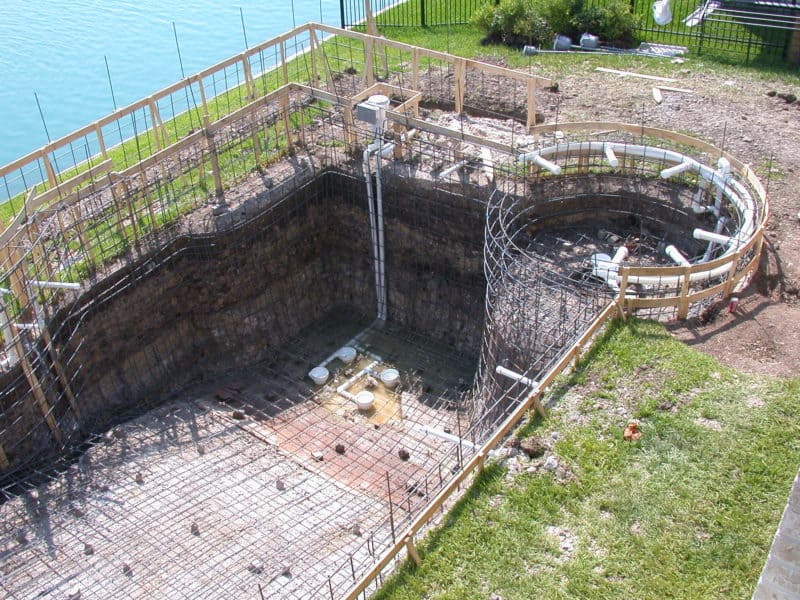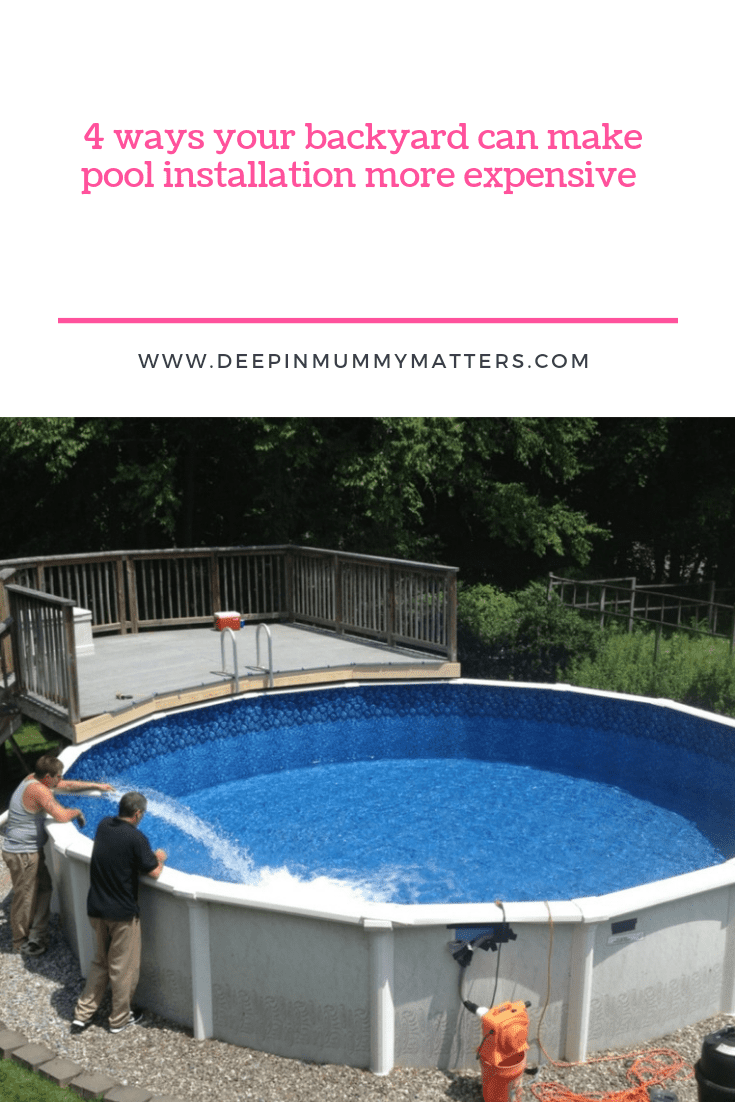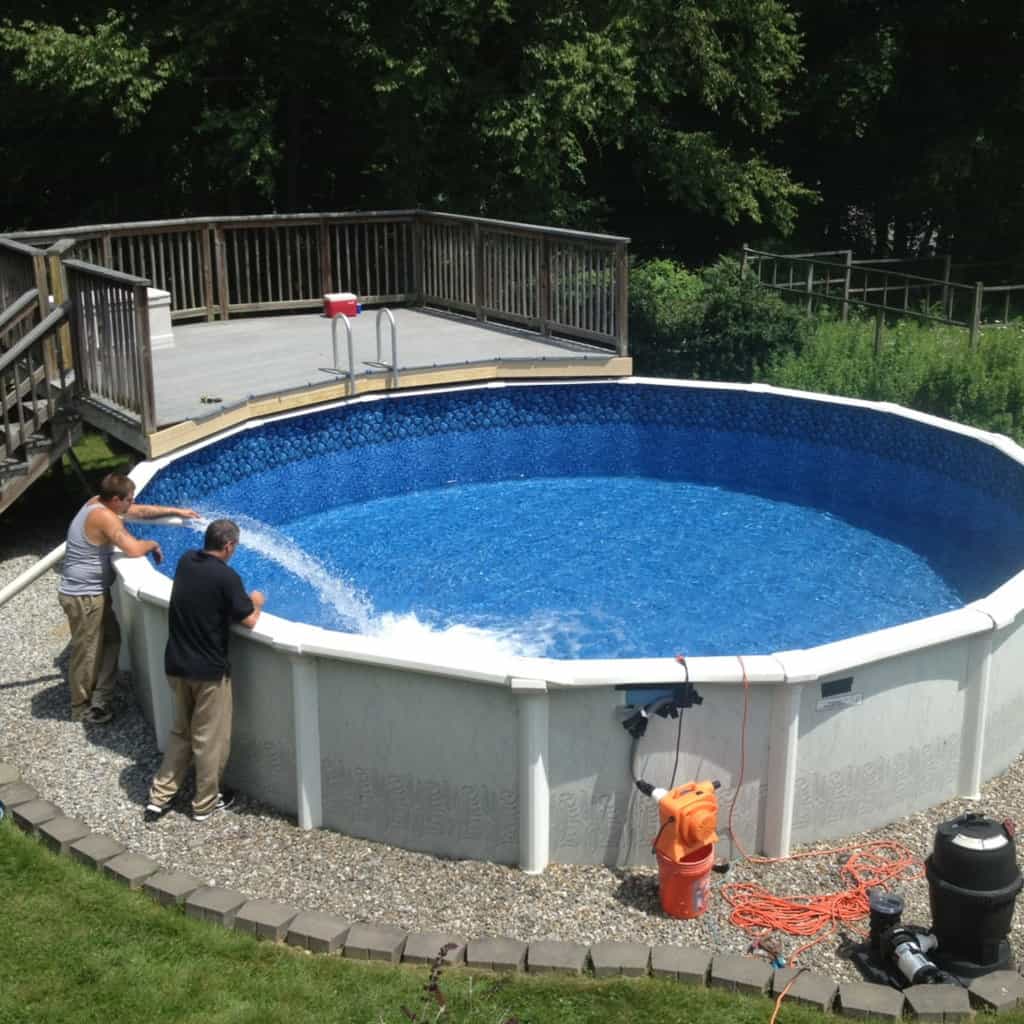Every pool installation is different. Each backyard requires different preparation, which might include levelling, removing trees and other vegetation, or any number of small adjustments that can cost you money. When your pool builder inspects your property, they will be able to give you a better idea of what your backyard will need – and how much those preparations might cost you. Here are some of the factors that can increase your pool installation bill.
Slope and Elevation

The largest issue with backyard pool construction is the slope and elevation of your yard. Pool builders can deal with grades, slopes, and elevations of most kinds. However, it costs more than you might expect to level the ground or adjust a slope. Some pools are made to accommodate the slope, working around it in unique and creative ways.
Of course, these issues can be discussed with your pool builder to reach a solution you both like. Just be prepared to pay if you need your yard flattened or a slop adjusted for your in-ground pool.
You should be able to tell how much of a slop needs to be flattened before the construction process begins. Make sure to go over the finer details with your contractor, as each backyard may require a different solution.
Beneath the Surface
Underground obstacles can create all types of problems for you. Rocks have to be removed during the excavation process. A few large stones may drive up costs. Finding a rock bed can halt your construction process and cost you a pretty penny at the same time. The soil may not hold up to excavation, either – and in some cases, there might be groundwater pockets under your backyard.
None of these problems will prevent you from building a pool. However, the additional labour and equipment can hit your pool budget pretty hard.
Utility Lines

If you happen upon a utility line during your pool excavation, you’ll want to have a little extra cash for the utility company. You may be charged to move the lines. If you disrupt the lines in a way that stops service from reaching the homes in the surrounding areas, you may be charged as well.
The good news is that most inspectors have the yard tested for utility lines before excavation begins. The bad news is that this isn’t a foolproof method. There could always be a line that no one discovered until it was too late.
Heavy Equipment Access
Of course, digging a hole for your new pool is the first step in any pool construction. Once the design is finished, the permits are obtained, and the bounds of the pool are defined, it’s time to get the backhoe in to dig out a space for your pool.
To do this, the machinery needs to be able to fit into your backyard. Most pieces of equipment are about 10 feet wide, so you must know how wide your gates are. You might have to remove part of your fence or gate and reconstruct it later, which can lead to more expenses.
Though smaller equipment is always an option, using it usually takes longer. IT’s best to make sure you have the room for heavy machinery to get to your backyard. If not, set aside funds to have your fence repaired or replaced when the pool construction process is finished.
In the worst-case scenario, you may not be able to make a large enough hole in your fence for the required machinery. If this is the case, your pool builder may use a variety of methods to dig the hole, including hand digging. Hand digging uses shovels and can take a lot longer than using machinery. It’s also much more expensive, as labour is extended over many hours.
Conclusion
You can’t help the way your backyard is shaped, and you may not know what’s lurking underground to mess up your perfect pool plans. Unfortunately, these circumstances may increase the cost of your pool installation without warning. Even thorough insp


